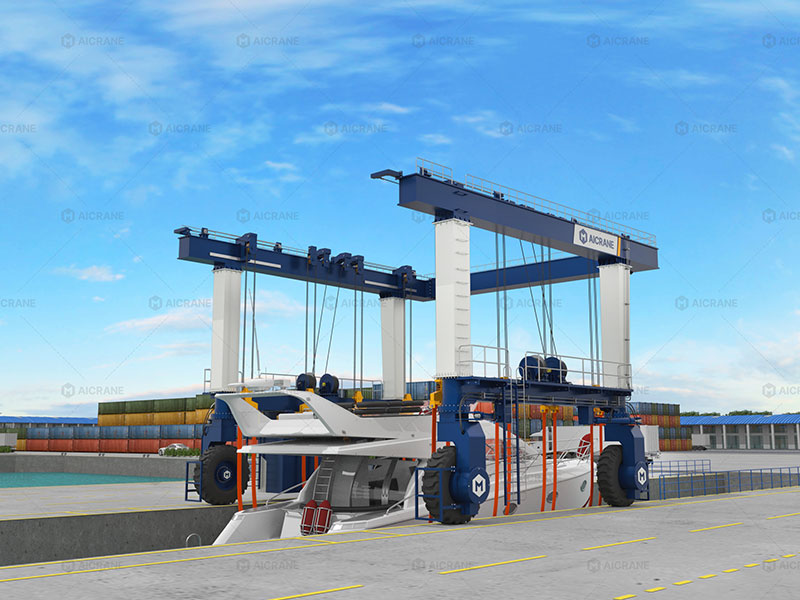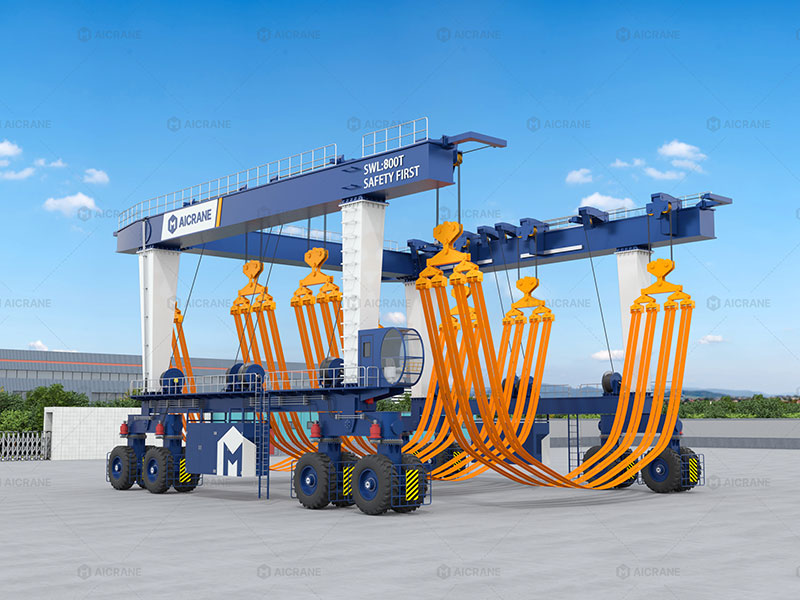Large shipyard cranes, particularly Goliath and gantry cranes, play a crucial role in the construction, assembly, and maintenance of ships and marine structures. These cranes handle extremely heavy loads, often exceeding hundreds or even thousands of tons, and operate in challenging coastal environments. As a result, their design requires meticulous attention to stability and load distribution to ensure safe, reliable, and efficient operation. This article explores the engineering principles, design considerations, and technological approaches used to maintain stability and optimal load distribution in large shipyard crane systems.

Understanding the Importance of Stability in Shipyard Cranes
Stability is one of the most fundamental aspects of any crane design. In the case of large shipyard cranes, stability determines the crane’s ability to safely handle massive loads without tipping, structural deformation, or excessive vibration. Shipyards are typically open and exposed to wind, tidal changes, and uneven ground conditions—all of which can compromise crane stability if not properly managed.
The larger the crane, the more complex the stability requirements become. For instance, a Goliath crane used in shipbuilding may have a span of over 150 meters and a lifting capacity exceeding 1,000 tons. At these scales, even minor imbalances in load distribution or sudden gusts of wind can create significant lateral forces, potentially destabilizing the crane.
Key Factors Affecting Stability
Several factors influence the stability of large shipyard cranes:
-
Crane Geometry and Structure:
The overall design, including the height-to-span ratio, girder configuration, and leg arrangement, directly impacts the center of gravity and load-bearing capacity. Lowering the center of gravity and optimizing leg placement can significantly enhance stability. -
Load Weight and Distribution:
Uneven load distribution across the lifting system or gantry can create torsional stress and unbalanced forces. Proper load path design ensures that forces are transferred symmetrically through the structure. -
Foundation and Rail Alignment:
Shipyard cranes often run on rails, and their stability depends on the uniformity of rail alignment and the strength of the supporting foundation. Any irregularity can lead to uneven wheel loading or structural distortion. -
Environmental Conditions:
Wind pressure, seismic activity, and temperature changes affect crane stability. Designers must account for dynamic loads caused by wind gusts and the lateral sway of suspended loads. -
Operational Factors:
Acceleration and deceleration of the trolley or gantry, sudden braking, and improper load handling can produce dynamic forces that impact crane equilibrium.
Load Distribution Principles in Crane Design
Effective load distribution is essential to prevent overloading individual structural components and to extend the crane’s service life. In goliath cranes, load paths must be carefully analyzed and managed across the entire structure – from the hoisting mechanism to the main girders, legs, and supporting rails.
1. Vertical Load Distribution
Vertical loads, primarily from the lifted object and crane self-weight, are distributed through the girders to the legs and wheels. The design must ensure that no single wheel or support bears an excessive portion of the total load. Engineers use finite element analysis (FEA) to simulate load distribution and optimize structural geometry accordingly.
2. Lateral Load Distribution
Lateral forces arise from wind, crane movement, or swinging loads. These forces are distributed through crossbeams, bracings, and diagonal supports. Reinforced truss structures or box girders are often used to enhance lateral stiffness and prevent buckling.
3. Torsional Load Distribution
Asymmetrical lifting, especially when the load is offset from the centerline, introduces torsional stress in the girders. To counteract this, shipyard cranes incorporate torsion-resistant designs, such as twin-box girders with internal diaphragms that evenly distribute twisting moments.
4. Dynamic Load Distribution
Dynamic loads occur during motion – when the trolley accelerates, decelerates, or when the load swings. Damping mechanisms and variable frequency drives (VFDs) help minimize the impact of these transient forces, promoting even stress distribution throughout the structure.

Structural Components Supporting Stability
1. Gantry Legs and Wheel Assemblies
The gantry legs provide the primary load path from the girders to the ground. They are typically designed as welded box sections with sufficient stiffness to resist bending and torsion. The wheel assemblies must distribute the load evenly along the rail while allowing smooth longitudinal movement. For large shipyard cranes, bogie-type wheel systems are often used to spread loads across multiple contact points.
2. Girders and Cross Beams
The main girders carry the vertical and horizontal loads from the trolley. They must maintain rigidity to prevent excessive deflection under heavy loads. Box-type double girders are favored in heavy duty gantry cranes for their superior torsional resistance and durability. Cross beams and bracing systems enhance lateral stability and prevent racking.
3. Rail Tracks and Foundations
A stable rail foundation is essential to maintaining even load distribution. Concrete foundations reinforced with steel anchor bolts are commonly used. Rail installation must adhere to strict tolerances in elevation and alignment to prevent uneven wheel loading and premature wear.
Design Strategies to Enhance Stability
1. Lowering the Center of Gravity
Designers strive to keep the crane’s center of gravity as low as possible to resist overturning moments. This can be achieved by optimizing the placement of machinery and counterweights and using high-strength lightweight materials in the upper structure.
2. Increasing Base Width
A wider gantry base increases the moment of stability and reduces the risk of tipping under lateral loads. Shipyard cranes with long spans often use wide-track gantry legs to improve balance.
3. Incorporating Wind Bracing Systems
Cross bracing and wind-resistant frames reduce lateral sway and vibration caused by strong winds. Some cranes are equipped with storm anchors or rail clamps to secure them during typhoons or hurricanes.
4. Using Redundant Support Systems
In critical applications, redundant load paths are integrated to maintain stability even if one component fails. This includes dual hoisting mechanisms or reinforced leg structures.
5. Simulation and Digital Twin Technology
Modern shipyard crane designs use digital twin models and computer simulations to analyze real-time load effects and predict potential instability. These tools enable engineers to optimize structural performance before manufacturing.
Safety and Monitoring Systems
Large shipyard cranes employ multiple safety systems to maintain stability during operations:
-
Load Moment Indicators (LMI): These devices prevent overloading by continuously monitoring lifting capacity and alerting operators when limits are approached.
-
Wind Speed Sensors: Installed on the crane structure to automatically restrict operations during high wind conditions.
-
Anti-Sway Control: Advanced control algorithms minimize load swing, ensuring smooth load handling and reducing dynamic stress.
-
Real-Time Structural Health Monitoring: Sensors track stress and strain at critical points, allowing predictive maintenance and early detection of instability risks.
Conclusion
Stability and load distribution are the cornerstones of large shipyard crane design. A stable and well-balanced gantry crane for sale not only ensures safety but also maximizes operational efficiency and equipment longevity. Modern design approaches – combining advanced materials, intelligent control systems, and digital simulation—enable engineers to create cranes that can safely lift enormous loads with precision and reliability, even in harsh marine environments.
As shipbuilding projects continue to grow in scale and complexity, the demand for cranes with superior stability and optimized load distribution will only increase. Through ongoing innovation in design and technology, shipyard cranes will continue to support the construction of the world’s most advanced vessels, maintaining the balance between strength, safety, and performance.